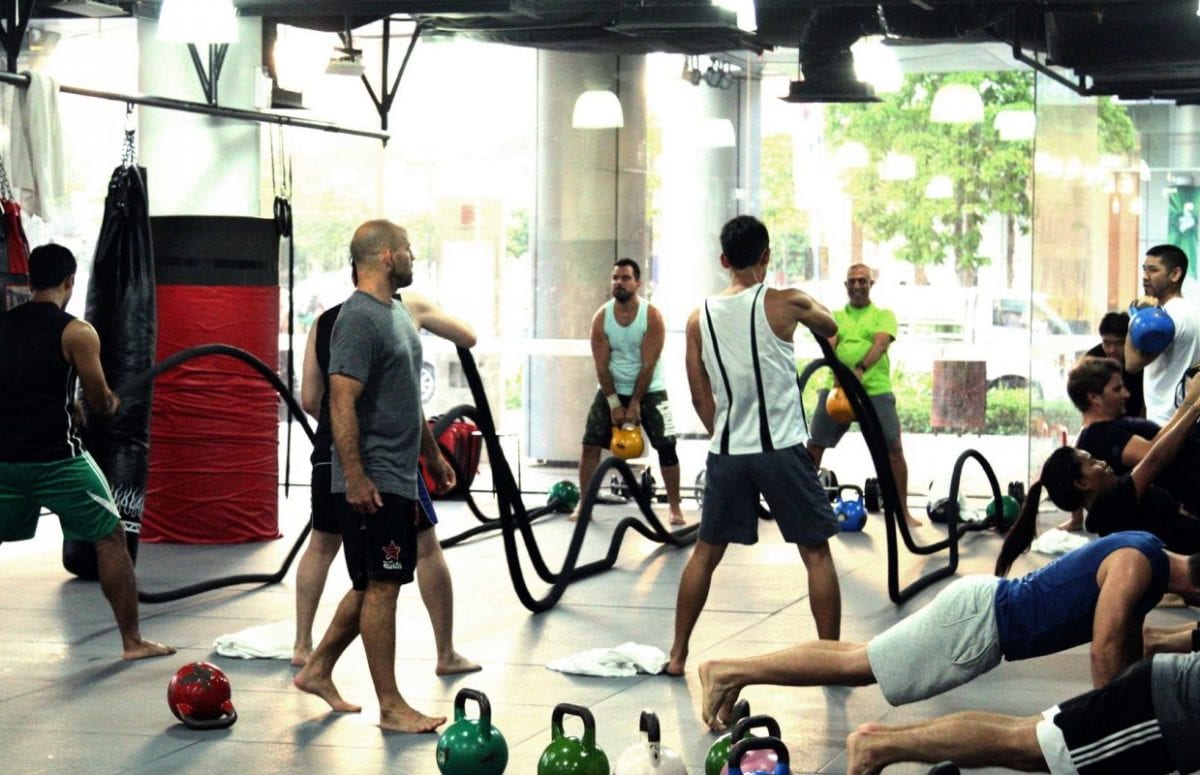My grandparents were avid devotees of their local YMCA. On mornings when they were babysitting me, they’d drop me off with the childcare worker for an hour while they went to Pilates.
As a 7-year-old, I found those mornings to be incredibly dull. After all, the childcare was supposed to be for kids much younger than myself. And, after all, there were never very many kids in there at that time of day.
However, I did strike up a friendship with a local police officer who was religious about working out. He was a runner and would give me a high-five on the way out for his morning run.
He ran 2 miles a day. Rain. Snow. Sleet.
It didn’t matter; he put his 2 miles in.
The newspaper did a write up on him about ten years later. His running habit was that legendary.
I honestly think that played a role in keeping me on the straight and narrow. I knew that there was some officer out there ready to run 2 miles at a moment’s notice.
I never wanted to be chased by a guy that determined.
Legendary cardiovascular strength is good for more than chasing down bad guys. Athletes with a strong cardiovascular discipline are notorious for their longer lifespans and lower risk of heart attacks.
Ready to achieve Superhuman status? Here are 3 tricks to biohack your heart health.
1. Lower Your Resting Heart Rate
Endurance athletes are well-known for their ability to have a lower resting heart rate. This measurement has long been viewed as one of the best indicators of heart health. While there is some genetic variance between athletes, it is common for elite athletes to have a resting heart rate around 40 beats per minute.
Meanwhile, the sedentary human can get as high as 80 beats per minute while resting.
A low resting heart rate can be a good indication of an athlete’s ability to train. The lowest heart rates occur when an athlete t is getting enough sleep, adequate protein and plenty of vitamins while maintaining a low level of life stress. This measurement demonstrates low cortisol levels and overall optimum health for aggressive training and muscle development.
Some of the lowest heart rates have been measured amongst cyclists, runners, swimmers, and skiers. Usain Bolt, for example, had a 33 BPM resting heart rate. Miguel Indurain — the Tour De France Cycling Champion — had a rate closer to 28 BPM when at rest.
(For those of you wondering, Michael Phelps has a resting heart rate of 38 BPM).
In addition, to exercise, losing weight, reducing your caffeine intake and getting a minimum of 8 hours of sleep a night are the best ways to dramatically lower your heart rate.
For an added biohack, take up meditation and yoga to decrease stress and your heart rate.
2. Increase Your VO2Max
Your VO2Max — Or the ability to process oxygen — is one of the best measurements of fitness. It’s the measurement that all of the elite athletes use to measure their progress.
The fastest way to increase your VO2Max is to do hard workouts. Operating at your VO2Max is the best way to build your capacity.
For dedicated athletes, it is recommended to perform at your maximum level for 6-8 minutes. Repeating that 3 times a week can create an incredible improvement in your fitness.
You can also break that up into 30-second workouts. Go hard for 30 seconds, and then at a moderate level for 30 seconds. Repeat that a minimum of 8 times, but keep pushing until you can do it 20 times.
Dave Henly, a recreational cyclist, started with 30-second sessions but now does 10, 1-minute sessions, for a total of 10 minutes of VO2Max training, twice a week. “I noticed my time trial times coming down with 3 weeks of training this way,” he says.
If 6 minutes seems like too much, r the good news is a lower level of benefit can be measured in as little as 2 to 5 minutes of maximum effort.
The bottom line is: Go hard.
If you want to hack this and build your VO2Max faster, try the Nordic skier at your local gym. The combined leg and arm movement have been correlated with an increased VO2max, with cross-country skiers demonstrating some of the highest exercise efficiencies in the world.
3. Recover, Recover, Recover
We alluded to this in Step 1, but increasing speed is all about the recovery time.
Hydration and sleep are the two top ways to increase your performance immediately. Study after study has demonstrated as much as a 20% increase in performance by becoming consistent with sleep patterns and hydration.
In some studies, they required athletes to sleep for at least 9 hours. Over a period of a few weeks, the athletes improve their performance over a control group.
The same goes for hydration. Even a small amount of dehydration can lead to massive drops in performance.
So go hard. But then, go home. Hydrate. Sleep.
Consistency is critical for creating superhuman cardiovascular strength.








